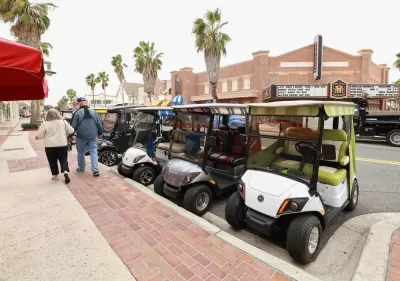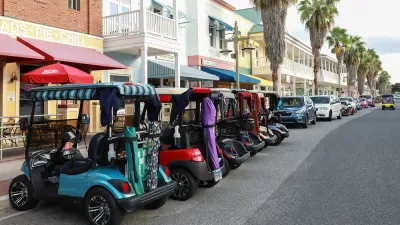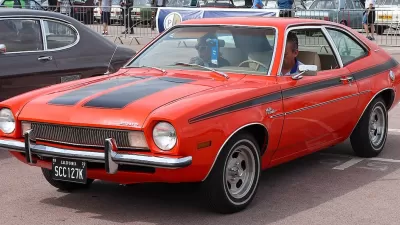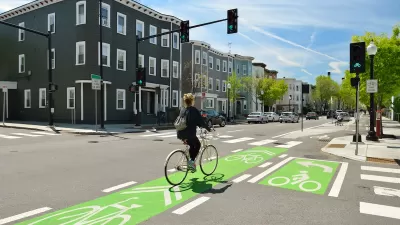Small, lightweight vehicles similar to golf carts could eliminate many Americans’ need for a second car and make roads safer for all users.

Writing in Fast Company, David Zipper highlights the disruptive potential of 'minimobility'—a variation on the more well-known micromobility—in particular, an emerging class of tiny vehicles modeled on golf carts. “While bikes and scooters have been around for well over a century, the addition of small electric batteries has been a revelation, letting riders comfortably handle steep hills and muggy weather (e-cargo bikes are especially helpful when lugging groceries or children).” Meanwhile, smaller, lighter vehicles pose less danger to pedestrians in collisions and produce fewer emissions for building and charging than larger electric cars.
As American cars get bigger and more expensive, small, efficient vehicles could become increasingly attractive to buyers. “Consumer preferences are already showing signs of shifting. In the U.S., more e-bikes are now sold than electric cars,” Zipper points out. “Golf carts—already ubiquitous in suburban enclaves like The Villages, Florida, and Peachtree City, Georgia—are popping up in places like Scottsdale, Arizona, and downtown Tampa.”
Zipper notes that the biggest obstacle to more widespread adoption is America’s tradition of car-centric development and road design, but that the tide is slowly turning in favor of multimodal infrastructure. “The prospect of a rapid shift toward small vehicles should be keeping auto executives awake at night. But from a societal perspective, it could be a dream come true.”
FULL STORY: Why car companies should fear the golf cart

Trump Administration Could Effectively End Housing Voucher Program
Federal officials are eyeing major cuts to the Section 8 program that helps millions of low-income households pay rent.

Planetizen Federal Action Tracker
A weekly monitor of how Trump’s orders and actions are impacting planners and planning in America.

Ken Jennings Launches Transit Web Series
The Jeopardy champ wants you to ride public transit.

New Mexico Aging Department Commits to Helping Seniors Age ‘In Place’ and ‘Autonomously’ in New Draft Plan
As New Mexico’s population of seniors continues to grow, the state’s aging department is proposing expanded initiatives to help seniors maintain their autonomy while also supporting family caregivers.

USDOT Waters Down Self-Driving Car Regulations
The agency is reducing reporting requirements for autonomous vehicles and cars with self-driving features, prompting concern among safety advocates who say transparency is essential to the safe deployment of AV technology.

‘Minnesota Nice’ Isn’t so Nice When You Can’t Find a Place to Live
The Economic Development and Housing Challenge Program can help address the scourge of homelessness among Indigenous people.
Urban Design for Planners 1: Software Tools
This six-course series explores essential urban design concepts using open source software and equips planners with the tools they need to participate fully in the urban design process.
Planning for Universal Design
Learn the tools for implementing Universal Design in planning regulations.
Heyer Gruel & Associates PA
Ada County Highway District
Institute for Housing and Urban Development Studies (IHS)
City of Grandview
Harvard GSD Executive Education
Toledo-Lucas County Plan Commissions
Salt Lake City
NYU Wagner Graduate School of Public Service





























